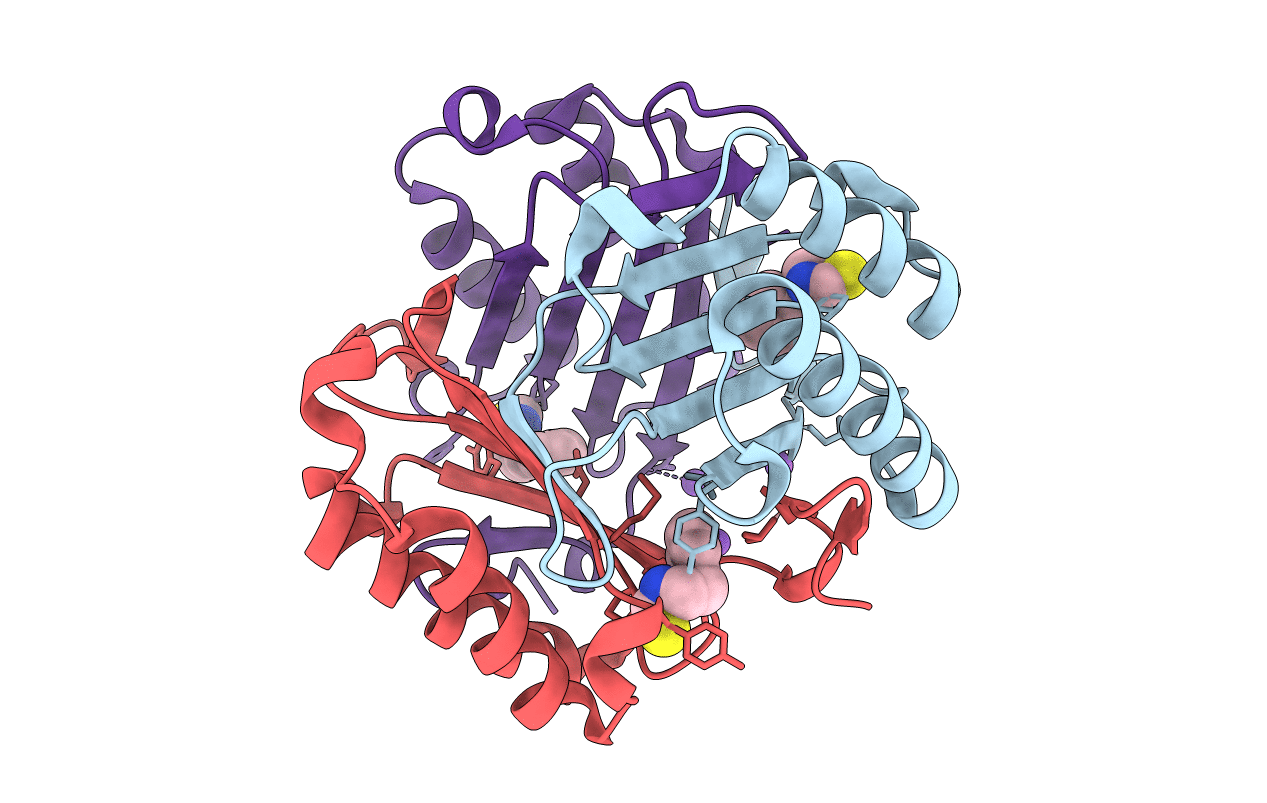
Deposition Date
2011-06-27
Release Date
2012-10-03
Last Version Date
2024-11-20
Entry Detail
PDB ID:
3SMB
Keywords:
Title:
Phenethylisothiocyanate Covalently Bound to Macrophage Migration Inhibitory Factor (MIF)
Biological Source:
Source Organism:
Homo sapiens (Taxon ID: 9606)
Host Organism:
Method Details:
Experimental Method:
Resolution:
1.60 Å
R-Value Free:
0.19
R-Value Work:
0.18
Space Group:
P 21 21 21


